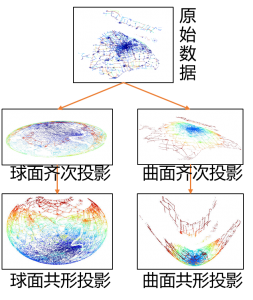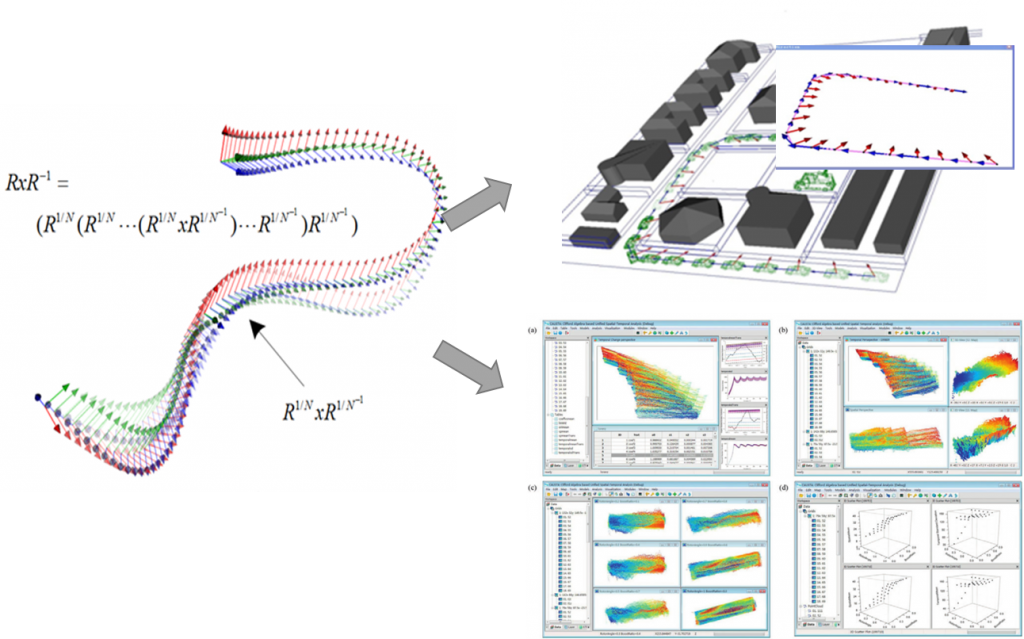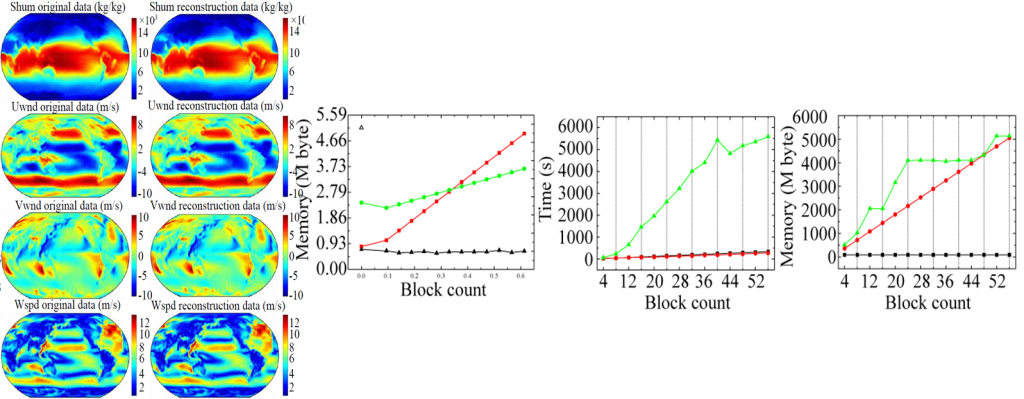Mapping methods of Geographic space and geometric algebra space
Inherited the existing expression of Euclidean space, on the basis of geographical space and time is established to geometric algebra of mathematical mapping and transformation mechanism of the space, for geographical expression of time and space, and provides multiple mathematical modeling analysis space.

Representation method for continuous and discrete Geographic objects
Traditional expression of time and space is three dimensional space and one dimensional time separation expressions of space and time, in time dimension embedded development the discrete expression of time and space, constructed on the basis of the Versor equation of continuous expression of time and space, and then use Versor equation analysis and interpolation can be realized the integration of continuous and discrete expressions, algebra, continuous/discrete integration of time and space expression patterns for geographic space-time fusion process integrated description and analysis provides a new theoretical support.

Scene data model
Developed based on the geometric basis of space data expression and structure mode, realized the vector field of time and space/multiple vector network data structure model and the expression method, formed the unified storage structure and calculation, structure, expression structure of multidimensional data model of GIS scene.

GIS data structure and Geographical law-based data index
Data structure is the key to improve GIS data organization and management efficiency. In view of the existing spatial data organization and management in some of the major contradictions, from the Angle of geography discipline and high-dimensional data analysis were presented based on the vector data structure and based on the elements of the geographical law of interaction when open stoping of data structure, and develop the corresponding index build, update, and the dynamic calculation method. The data structure of spatio-temporal field is developed, which realizes the continuous appending, compression and continuous updating of high-dimensional massive space-time flow data, and has obvious advantages in storage, retrieval and calculation efficiency. It provides an efficient data structure foundation for the modeling, management and analysis of massive high-dimensional dynamic data.
